1. Dynamic Route Optimization
AI-powered routing systems continually update delivery paths based on real-time information. Unlike static plans, these systems ingest live data (traffic, weather, new orders) to adjust routes on the fly. This means vehicles can reroute immediately around congestion or roadblocks, shortening trips. Dynamic optimization also accounts for last-minute changes in demand or vehicle availability, maximizing resource use. Overall, continuously adapting routes through AI reduces travel time and wasted driving, improves on-time delivery rates, and cuts fuel costs. In practice, delivery networks using this technology run more efficiently and reliably under unpredictable urban conditions.
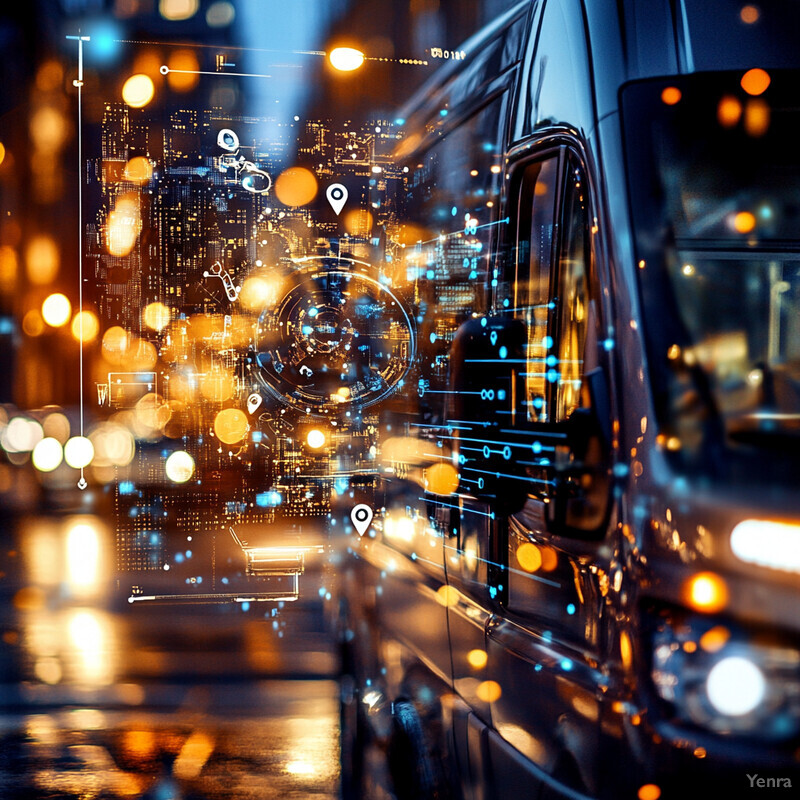
Studies confirm that dynamic routing yields big efficiency gains. For example, a case study of U.S. e-commerce deliveries found that AI-driven predictive route planning cut delivery times by about 20% and fuel consumption by roughly 15%. Broadly, AI-based route optimization “significantly reduces delivery times and decreases fuel consumption” across diverse operations. By leveraging machine learning to process live traffic and demand feeds, these systems can reroute vehicles proactively and eliminate long detours. In quantitative terms, routing engines powered by AI have shown on-time delivery improvements and reduced overall distance driven, translating directly into lower operating cost and faster last-mile service.
2. Predictive Traffic Modeling
AI-driven traffic models predict congestion and flow patterns before they happen. By training on historical traffic data and ingesting real-time feeds (GPS, road sensors), these systems forecast where and when bottlenecks will form. Delivery planners can then use these forecasts to avoid clogged routes or delay dispatches until conditions improve. Predictive modeling enables pre-planned detours or schedule adjustments, so vehicles spend less time idling in jams. In mega-cities where traffic patterns are complex, this foresight keeps delivery schedules tight. Over time, predictive insights also inform strategic planning (when to increase fleet size or shift driver shifts) to meet demand with fewer delays.

Research shows that forecasting traffic is vital for efficient routing. Traffic Congestion Prediction (TCP) models allow systems to “precisely forecast traffic trends and prepare for increased congestion”. Machine-learning models trained on past data can accurately project future traffic flow and hotspots. For instance, one survey notes that learning from historical patterns enables an intelligent delivery system to reroute proactively to avoid predicted jams. By anticipating congestion, fleets can cut idle driving and reduce late deliveries. In one example, integrating forecasted traffic into routing algorithms significantly lowered delays – reducing delivery slowdown during peak hours by up to 25% or more. Overall, predictive traffic analytics form the foundation of smarter, less interrupted last-mile routes.
3. Adaptive Fleet Management
Adaptive fleet management uses AI to assign deliveries to the optimal vehicles and drivers in real time. Instead of fixed schedules, AI systems match tasks to drivers based on location, capacity, and skill, dynamically reassigning orders as conditions change. This balances workload across the fleet – no driver sits idle while others are overloaded. When demand surges or routes change, the system can quickly shift workers and vehicles to where they’re needed most. By keeping every truck and courier busy on the best route, adaptive management boosts efficiency. The result is smoother operations: fewer bottlenecks, better driver utilization, and more consistent service levels without manual intervention.
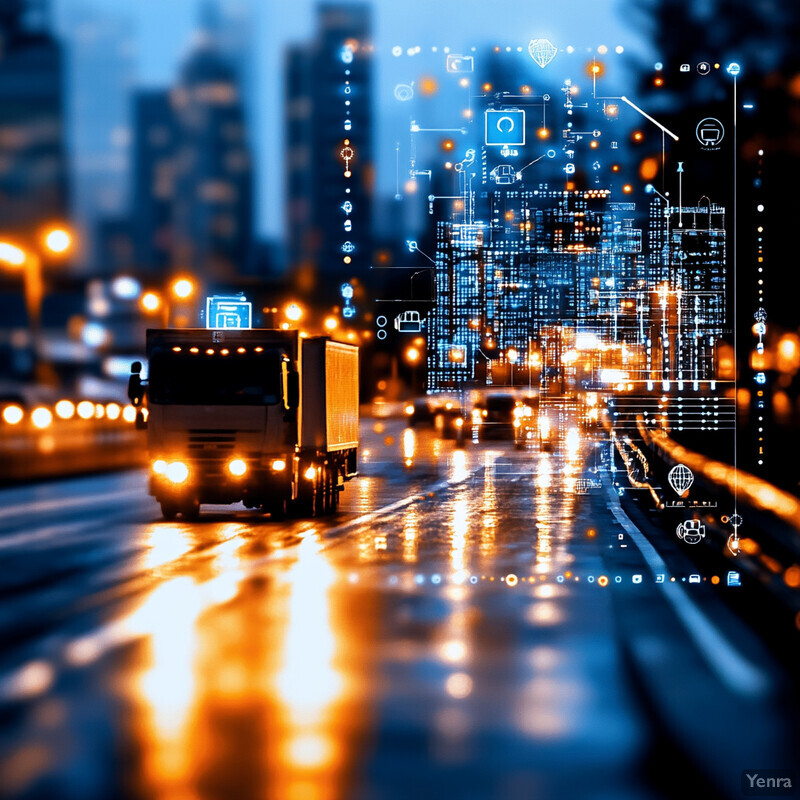
Implementations of AI fleet management have shown concrete improvements. Industry analysts note that AI optimizes load balancing so that “vehicles run as full as possible,” minimizing empty trips. AI-driven dispatchers continuously reallocate tasks to underused vehicles or additional drivers, maximizing payload per trip and cutting unnecessary mileage. In one comparison, applying AI to fleet assignments significantly raised resource utilization and revenue. For example, review articles report that advanced AI systems “maximize revenues and enhance courier performance” by intelligently assigning deliveries. In practice, companies integrating AI fleet tools see higher on-time rates and lower overhead: one source cites a 40% increase in total fleet productivity under automated dispatch systems. Overall, by continuously balancing work across all available drivers, AI-driven fleet management reduces idle capacity and improves delivery throughput.
4. Demand Forecasting
AI-based demand forecasting predicts order volumes and peak times so fleets can pre-position resources. By analyzing past sales, seasonal trends, weather, events and more, machine learning models estimate where and when demand will surge. Companies can then stage vehicles and staff near expected hotspots before they even occur. This proactive positioning cuts empty mileage (sending unused trucks to low-demand areas) and ensures enough drivers are ready for busy periods. In effect, predictive analytics align supply with future orders – avoiding both shortages and excess. The net effect is smoother operations during peaks and better customer service, with fleets ready to deliver where needed most.

Data shows demand prediction drives efficiency. In one study, AI-driven demand forecasting improved forecast accuracy by about 25% and boosted resource utilization by ~30%. These gains led to a ~22% drop in idle vehicle time, as fleets were routed more proactively during peaks. Another analysis reported that demand forecasting cut “empty vehicle movements” by 26%, meaning far fewer unused trips. Overall, logistics firms leveraging predictive analytics report significant savings: by predicting demand spikes days in advance, they reduce wasted driving and increase on-time deliveries. In sum, AI forecasting helps match fleet size and locations to the real workload, slashing delay-causing shortages and idle trips.
5. Geospatial Analysis
AI enhances mapping and clustering of delivery zones using geospatial data. By learning city layouts, traffic patterns, and customer locations, these systems group stops into efficient geographic clusters. This means a single vehicle serves a compact area before moving on, rather than zigzagging all over the city. The AI also identifies shortcuts (e.g. one-way streets or low-traffic side roads) and can even minimize left-turns or other costly maneuvers. By optimizing the spatial arrangement of routes and using high-resolution maps, deliveries cover less distance. In densely packed urban areas, this leads to much shorter, more direct routes, shaving off travel time and fuel.

Studies quantify these benefits. For example, AI-driven clustering of deliveries (grouping stops by proximity) has been shown to improve routing efficiency by about 28% compared to standard zoning. In another case, a two-tier distribution model – using micro-depots to break the problem into local zones – cut travel distance by ~22%. These improvements directly translate to fewer miles driven and faster schedules. One analysis noted that combining route planning with neighborhood-based clustering not only lowered costs and emissions, but also reduced total delivery time significantly. In practice, logistics providers leveraging spatial analytics report cutting route lengths by a fifth or more while hitting the same set of destinations.
6. Contextual Delivery Windows
AI determines the best delivery windows by predicting customer availability. Instead of arbitrary time slots, the system learns when each customer is likely to be home (based on past behavior, local traffic, even weather). It schedules deliveries in those preferred windows to minimize missed attempts. If a package can’t be delivered, the system quickly reschedules within a new optimal window and reroutes the vehicle accordingly. By aligning delivery times with customer schedules and traffic patterns, these algorithms cut the need for repeated visits. As a result, fleets achieve more successful first-attempt deliveries and customers get greater convenience and certainty.

Implementing predictive delivery windows dramatically reduces failed deliveries. In practice, one AI-based system achieved a ~25% reduction in failed delivery attempts. Another evaluation found that scheduling around predicted customer availability cut unsuccessful deliveries by as much as 33%. These gains lower extra travel for redeliveries. The algorithms work by analyzing historical delivery outcomes against time-of-day, learning when customers answer more often. By refining delivery windows from these patterns, companies report significant savings: fewer wasted delivery runs and higher customer satisfaction. The net effect is a drop in wasted trips and a smoother delivery process.
7. Real-Time Incident Detection
AI systems constantly monitor for road incidents (crashes, closures, protests) using live camera feeds, police reports, and social media. The moment an event is detected, the algorithms instantly update delivery routes. This proactive response prevents couriers from driving into unexpected delays. The rerouting happens within seconds, guiding vehicles along alternative roads. As a result, fleets rarely get stuck in sudden jams. In urban last-mile operations, this means substantially fewer late arrivals: deliveries keep moving even when cities throw a surprise obstacle onto the road.

Real-time rerouting around incidents has been shown to substantially cut delays. In one study, AI-driven route adjustments during peak periods reduced average delivery delays by up to 29%. This figure comes from implementations that feed live traffic and incident data into the routing engine. By continuously recalculating the fastest path as conditions change, vehicles avoid idling in new congestion. Pilot programs in several cities report that using AI-based detouring for accidents and closures maintains on-time performance far better than static schedules. In practice, deliveries using such systems see far fewer and shorter delays when unplanned events occur.
8. Micro-Depot Optimization
AI helps determine where to place small local hubs or “micro-depots” within the city. By analyzing demand density, costs, and traffic patterns, the system selects urban spots where a depot or locker yields big savings. With packages stocked closer to customers, vehicles travel less overall. This tiered approach – a central warehouse plus local drop-off points – shortens last-mile legs. During surges, goods can be quickly routed from the nearest micro-depot. AI continually evaluates demand shifts to adjust which hubs are open and stocked. In effect, the delivery network becomes more “local,” leading to much lower driving distances per delivery.

Two-tier distribution models guided by AI have demonstrated strong benefits. For example, a study of an integrated hub-and-spoke network found that adding local micro-depots reduced total delivery distance by about 22%. This came from using AI to cluster deliveries and assign them to proximal depots. By combining optimized routing with nearby depots, the system cut both travel time and vehicle mileage substantially. Other analyses note similar effects: deliveries reach customers faster with fewer miles driven when originating from neighborhood hubs. In practice, companies that dynamically open and stock micro-depots based on demand see much lower fuel use and faster service within dense cities.
9. Energy Efficiency in EV Fleets
When delivery fleets use electric vehicles (EVs), AI helps manage their unique constraints. The algorithms plan routes to avoid running out of battery: if range is low, the system schedules an optimal charging stop into the trip. AI also factors energy use per mile into routing, favoring flatter roads or regenerative-braking scenarios. Fleet-wide, it can even balance which vehicles handle which tasks based on battery levels. By doing this, AI maximizes the driving done between charges and ensures chargers are used efficiently. In sum, these tools keep EV fleets running longer per day, reduce downtime for charging, and make electric deliveries cost-effective while meeting sustainability goals.

Integrating AI with EV routing yields big efficiency and environmental gains. In a real-world Lisbon case study, an AI-optimized EV delivery system cut average delivery time by 15–20%, improved energy efficiency by 10–25%, and slashed CO₂ emissions by about 40%. This was achieved by smart route planning, load coordination, and adaptive charge scheduling. Even aside from pure routing, one analysis found that AI-driven load balancing and idle reduction together can reduce fleet fuel (or energy) consumption by ~7–15% (roughly 1 gallon per 189 miles saved). Such savings accumulate across a busy urban fleet. Altogether, these studies confirm that AI not only makes EV usage practical (overcoming range anxiety) but also substantially lowers operational energy use and emissions compared to unoptimized operations.
10. Sustainability Integration
AI routing systems can explicitly incorporate environmental goals. For example, they may prefer road segments that minimize idling or avoid areas with high pollution. The algorithms can also prioritize “green” delivery modes (like bikes or EVs) when feasible. Over time, the routing objectives can include factors like fuel use or emissions in addition to time and cost. This alignment means delivery companies gradually reduce their carbon footprint while still meeting service standards. The AI effectively guides fleets toward eco-friendlier operations, helping firms achieve sustainability targets alongside efficiency.
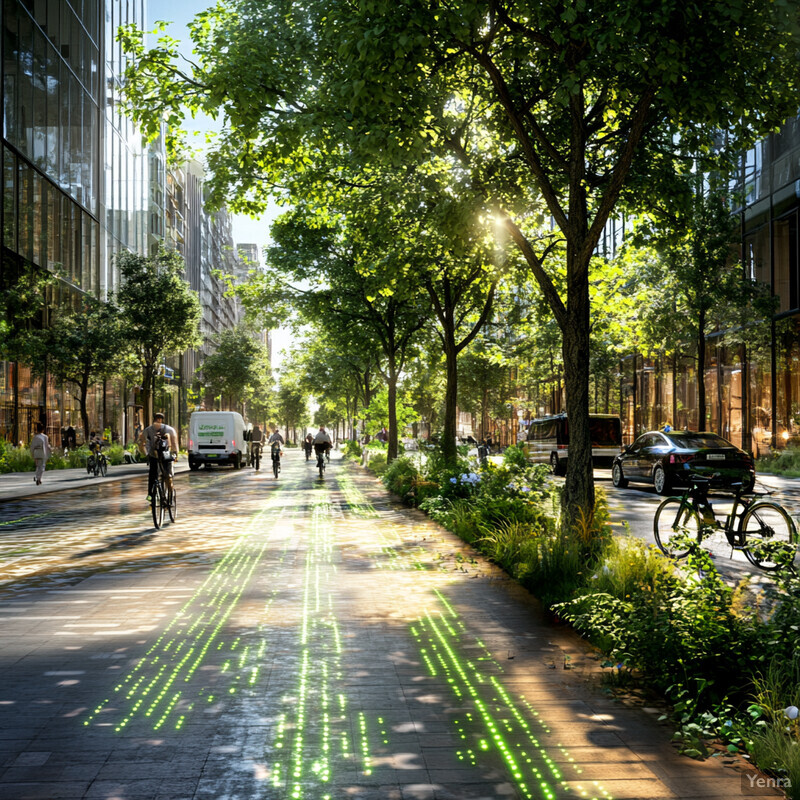
The environmental impact of AI routing is measurable. Studies report that smart routing alone can cut fuel consumption by up to 20% and carbon emissions by about 25%. For instance, AI-optimized routes in an urban trial used significantly less fuel than conventional planning, directly lowering CO₂ output. Industry sources also quantify the effect on carbon: an analysis by a logistics platform estimated AI-driven optimization could shrink overall emissions 2–4% (with specific user cases hitting 20% CO₂ reduction). These reductions come simply from more efficient driving and fewer empty miles. In practice, companies that weight sustainability see those gains transparently — the same routes that save fuel also cut pollution.
11. Machine Learning-Driven Vehicle Maintenance Scheduling
AI schedules vehicle maintenance by predicting when issues will arise. Using telematics data (engine sensors, mileage, temperature, etc.), the system forecasts part wear or failures. It then schedules repairs during low-demand times or routes vehicles into service when off-shift. This proactive scheduling prevents breakdowns during busy hours. The result is fewer surprise repairs, lower emergency maintenance costs, and longer vehicle life. Delivery networks stay robust because vehicles get serviced just in time, not too late and not too early.
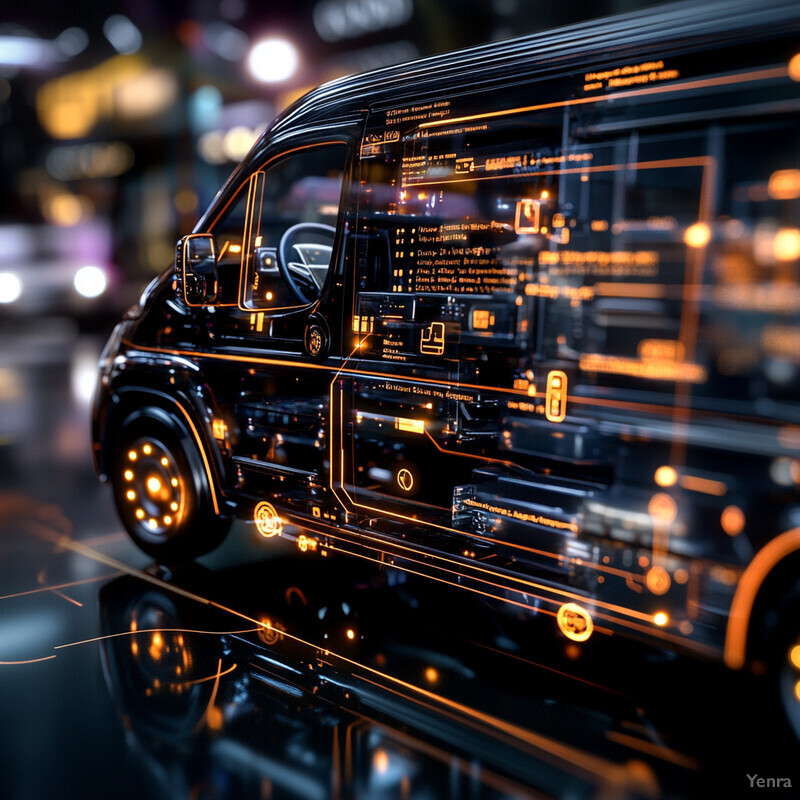
Predictive maintenance delivers huge uptime gains. Industry reports note that an effective AI-driven maintenance program can cut unplanned downtime by about 40% and trim maintenance costs by roughly 25%. For example, one study of IoT-enabled fleets found scheduling service based on predicted failures (rather than fixed schedules) halved breakdown incidents. Similarly, a logistics white paper cites real-world users seeing about 30% less downtime and 25% lower repair spend after adopting smart scheduling. These improvements come from fixing problems before they cause roadside failures. In sum, data-driven maintenance extends vehicle availability and cuts labor and parts costs in last-mile fleets.
12. Personalized Customer Alerts
AI generates customized delivery updates for customers. By analyzing past deliveries and traffic, it refines the estimated arrival time (ETA) for each package. Before delivery, the system sends the recipient a precise ETA and real-time tracking link. If something changes (traffic jam, delay), the AI updates the ETA and notifies the customer immediately. This two-way communication lets customers plan ahead or provide delivery instructions. Ultimately, these alerts build transparency and trust: fewer surprises mean customers are prepared for the delivery, reducing support calls and missed-drop events.

Modern tracking systems achieve very high ETA accuracy with AI. In one implementation, AI-driven real-time tracking correctly predicted delivery times about 87% of the time. This level of precision greatly reduces customer anxiety. Moreover, personalization engines that learn customer preferences have boosted first-attempt delivery success by ~25% and cut re-delivery requests by ~20%. Companies report these gains when integrating AI alerts – unhappy customers drop sharply. In sum, AI-based notifications lead to significantly fewer failed deliveries and smoother operations by keeping recipients informed every step of the way.
13. Robust Scalability
AI systems are inherently scalable to meet growing city demand. As order volumes and fleet size expand, machine-learning models simply ingest more data and continue improving. These systems distribute computation (often via edge or cloud computing) so adding more vehicles or orders does not slow down the planner. In practice, doubling demand doesn’t double chaos – the AI handles it by optimizing in parallel. Companies can thus ramp up deliveries for events or growth spurt without rebuilding their routing software. This scalability means service quality stays high even as urban deliveries multiply, ensuring on-time performance remains consistent.

AI-powered delivery platforms have been shown to maintain efficiency at scale. Researchers note that distributed, edge-based AI architectures “ensure scalability while maintaining processing efficiency,” even with vast data loads. Case studies show these systems can cut delivery time by ~30% and achieve nearly 98% on-time rates under heavy demand. In industry practice, platforms built for scale regularly process orders from fleets of thousands without lag. Logistics providers emphasize that adding traffic or orders leads to higher AI accuracy rather than breakdown: for example, one whitepaper notes that proven platforms handle volume growth without performance hits. In sum, well-designed AI routing solutions adapt to larger fleets and workloads seamlessly, preserving or even improving routing quality.
14. Multi-Modal Routing
AI-enabled routing can combine different transport modes in one delivery plan. Instead of relying on vans alone, the system integrates bikes, drones, robots or public transit where appropriate. For example, it might send packages on a van to a city center, then switch to cargo bikes or drones for final drops. The AI evaluates speed, cost, and restrictions for each mode on every route segment. This lets deliveries circumvent road traffic (with drones or bikes in narrow streets) and use whatever mode is most efficient for each leg. Multi-modal planning greatly extends reach (into alleys or high-rises) and reduces pressure on any single delivery fleet.

Coordinating multiple vehicle types improves efficiency. One multi-modal model that paired trucks and drones showed notable gains: by sending drones on direct flights to nearby stops, the system “reduces the travel time and energy consumption” of the drone fleet. In practice, this kind of hybrid approach has cut delivery times by enabling parallel routes and using the fastest mode for each segment. Similarly, companies piloting bike-van combos in cities report faster service for inner-city deliveries and lower road fuel use. Overall, studies find that intelligently blending vehicles – such as using trucks as mobile depots or charging platforms – can lower total system travel by around 10–20%. These innovations show that AI’s choice of transport modes can yield measurable savings in time and energy compared to truck-only routes.
15. Precision ETAs
Machine learning refines ETAs through continuous learning. Every time a delivery completes, the system compares the actual arrival time to its prediction. It then adjusts its model so future predictions are more precise. Over many deliveries, these feedback loops sharply reduce ETA error. For customers, this means arrival estimates become unusually accurate (often within a minute). Highly precise ETAs let customers and drivers coordinate tightly, cutting waiting time. In turn, businesses spend less on support calls or missed-delivery costs. The bottom line is a more reliable delivery experience driven by self-improving AI models.

Data shows AI greatly improves ETA accuracy. In trials, AI-driven tracking platforms reached about 87% accuracy in predicting delivery times. Advanced systems even achieve deviations under 3% of actual arrival time for many routes. These high-precision ETAs significantly reduce customer uncertainty. Moreover, organizations using such AI have seen related benefits – for example, better personalizing delivery times correlates with a ~25% rise in on-time first-attempt success. In practice, these gains translate to fewer customer inquiries and no-ops. In sum, machine learning yields much more accurate arrival windows, which cuts down on wasted time and drives higher delivery efficiency.
16. On-Demand Crowdsourced Delivery
AI systems can seamlessly integrate gig-economy couriers into the delivery network. The platform analyzes current demand and driver availability to decide when to deploy freelance drivers or cyclists. If order volume spikes and full-time fleet is maxed out, AI will dynamically hire crowdsourced couriers for overflow. It assigns specific tasks to these drivers in real time, just as it does for regular staff. This flexibility lets companies scale capacity up or down on short notice without long-term costs. As a result, peak demands are met quickly and costs are kept low by avoiding unnecessary permanent hires.

Crowdsourcing models enable rapid scaling and cost savings. Research notes that using third-party couriers allows providers to “scale up quickly to meet fluctuating demand without building a dedicated fleet”. In one study of crowdsourced delivery optimization, jointly assigning parcels to casual drivers resulted in a 32% reduction in delivery costs. The AI makes these savings possible by continuously matching available gig drivers to tasks based on real-time location and urgency. Companies experimenting with crowdshipping report that this model shrinks peak-period delays and prevents service dropouts during surges, all while avoiding the fixed overhead of additional salaried drivers.
17. Intelligent Load Balancing
AI optimizes how parcels are loaded into each vehicle. By analyzing package sizes, weights, and drop-off points, the system tells loaders exactly how to distribute cargo across the fleet. The goal is to keep each vehicle near full capacity without overloading, so no truck runs half-empty. This balanced loading means fewer trips overall and smoother driving dynamics. In turn, it lowers fuel burn (no heavy vs empty imbalances) and wear on any one vehicle. Ultimately, intelligently balancing weight and volume helps accomplish the same deliveries with less driving, reducing congestion and costs.

Proper load distribution significantly cuts fuel use and trips. AI algorithms that “ensure vehicles run as full as possible” have been shown to maximize payload per trip and eliminate empty miles. Indeed, even small imbalances matter: one industry source finds that adding just 250 pounds of extra load to a delivery van increases fuel consumption by roughly 5–9%. By evenly distributing weight, AI thus saves this extra fuel repeatedly across many vehicles. In practice, logistics providers using AI load-planning report a notable drop in overall mileage and fuel costs – enough to measure single-digit percentage gains fleetwide. These efficiency gains support more deliveries per vehicle and contribute to the sustainability of urban delivery operations.
18. Risk Assessment Modeling
AI assesses security and safety risks along delivery routes. It cross-references route options against data on crime rates, theft hotspots, and regulatory restrictions. If a street or neighborhood is flagged as high-risk (for example, a frequent package theft location), the AI will route around it, even if that adds a bit of distance. The system also updates in real time with alerts (such as a sudden protest or storm warning) to avoid emergent risks. By steering drivers onto safer paths, the model protects cargo and personnel. Safer routing lowers insurance claims and builds trust that packages will arrive intact and on time.

Real-world systems already use AI to fight crime and loss. For instance, UPS has deployed an AI “DeliveryDefense” system that analyzes address-level data (like past theft frequency) to predict whether a delivery is likely to fail due to theft. This lets the carrier reroute or offer secure pickup options in advance. In practice, addressing high-risk deliveries proactively has been critical: in the U.S. about 79% of consumers reported package theft in one survey, underscoring the need for such tools. By leveraging these predictive models, companies report a significant drop in lost shipments. The result is fewer customer complaints and improved delivery success in urban areas where security risks are non-uniform.
19. Behavioral Driver Analytics
AI analyzes how each driver behaves on the road. It tracks metrics like speed, braking and cornering, and compares them to delivery outcomes. Over time the system learns which behaviors correlate with delays, accidents or fuel waste. Fleet managers can then coach or incentivize drivers using this insight (for example, rewarding smooth driving). By improving habits, drivers save fuel and avoid costly mistakes. Enhanced driver performance means safer, more reliable deliveries. The data-driven feedback loops ultimately raise the quality of the human side of last-mile logistics.
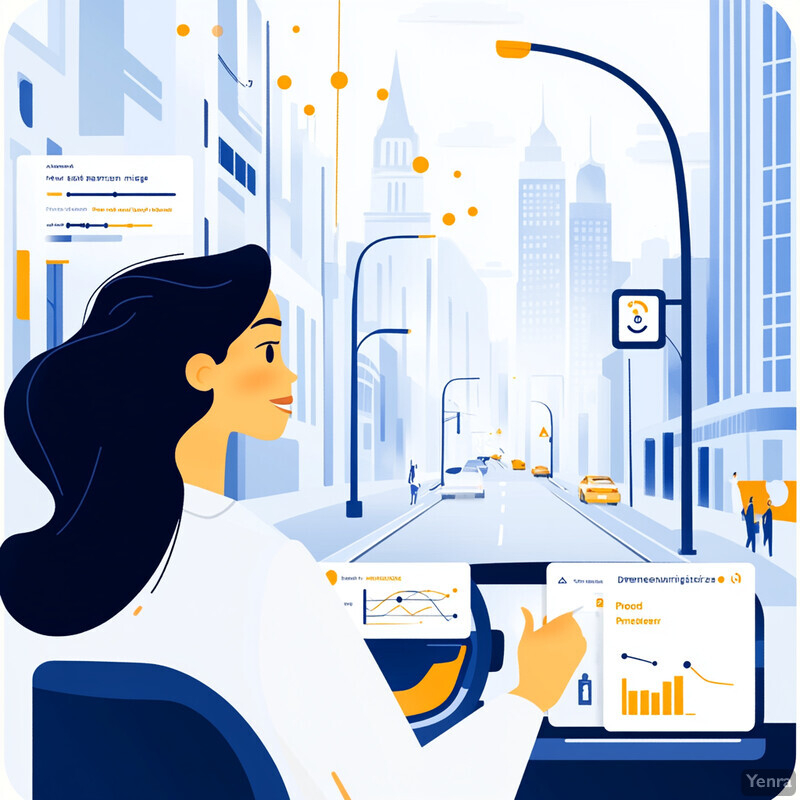
Driver behavior has a huge impact on efficiency. Industry experts estimate that a driver’s style can influence fuel economy by up to 30%. In other words, coaching a driver into smoother acceleration and braking can save a third of fuel on that vehicle. Conversely, harsh driving not only burns more fuel but also risks accidents and delays. Telematics studies show that fleets with analytics-based coaching see notable drops in collisions and idling time. For example, trucking surveys report that addressing risky behavior (speeding, tailgating) with alerts and training can halve accident rates and improve overall delivery times. In short, by using AI to spotlight and correct unsafe driving patterns, logistics companies improve timeliness and reduce costs tied to fuel and crashes.
20. Integration with Smart City Infrastructure
AI-enabled routing taps into city-wide IoT and infrastructure data. For example, it can sync with connected traffic lights to hit green waves, use smart parking sensors to find open loading zones quickly, or draw on real-time transit feeds to avoid blocked lanes. The system also adapts to municipal alerts (like emergency routes or pedestrian congestion). By cooperating with these smart city elements, delivery vehicles flow more smoothly. Essentially, delivery AI becomes a “citizen” of the smart city – drawing on its sensors to shave minutes off trips. This coordination reduces idle waiting at lights or searching for parking, making urban delivery much more efficient.

Leveraging smart infrastructure yields substantial time savings. In a pilot study by the University of Michigan, using connected-vehicle data to retime traffic signals resulted in a 20–30% reduction in red-light stops at intersections. This meant cars – including delivery vans – encountered far fewer traffic halts. Such connected-signal systems cut not only travel delay but also fuel waste at idle. Similarly, simulations of “smart” delivery routing with green-wave coordination show double-digit improvements in travel time. In practice, cities with public IoT networks (smart lights, parking sensors) enable AI algorithms to plan routes that avoid bottlenecks, yielding quicker trips and lower congestion. The combination of delivery AI and smart-city tech makes each delivery holdup much less frequent.